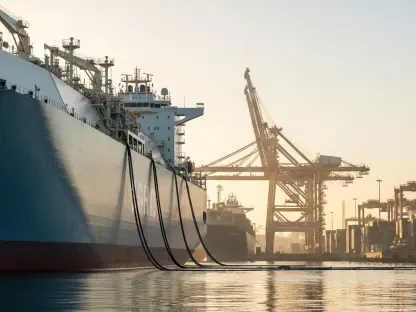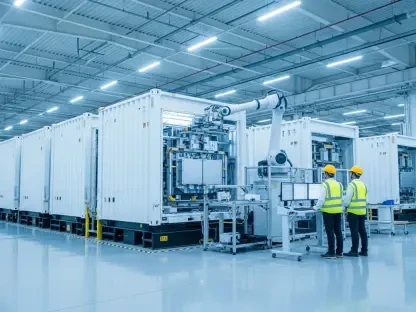Finland has made a remarkable transition in its energy generation sector, moving from coal-powered energy to wind power in less than a decade. This commitment to phase out coal ahead of schedule has positioned the country as a model for other nations considering similar energy transitions. The swiftness and efficiency of Finland’s shift reflect the country’s robust policy framework, technological advancements, and dedication to sustainable practices, setting a global benchmark for clean energy initiatives.
Achieving Early Milestones
In a significant milestone for Finland’s energy sector, power utility company Helen officially closed its Salmisaari coal power plant in Helsinki on April 1, 2024, marking the end of an era for coal power in the country. This closure resulted in coal accounting for less than 1 percent of Finland’s energy mix, a substantial reduction reflecting the nation’s commitment to cleaner energy sources. Initially, Finland aimed to achieve a complete phase-out of coal by 2028; however, reaching this goal four years ahead of schedule underscores the effectiveness of Finland’s policy framework and the technological advancements that facilitated this transition.
Helen’s proactive measures and government support catalyzed this achievement, showcasing Finland’s capacity for rapid and effective energy transformation. The early milestone is indicative of the nation’s foresight in prioritizing renewable energy and implementing rigorous policies that have accelerated the transition. This success story is essential not only for Finland but also as an inspirational template for other nations striving to phase out coal and embrace cleaner, more sustainable energy sources.
CEO Insights and Financial Benefits
Olli Sirkka, CEO of Helen, has highlighted the numerous advantages associated with shifting to renewable energy. According to Sirkka, the main benefits include lowering emissions and reducing electricity prices for consumers. The comprehensive investment in flexible energy systems and green solutions has not only enhanced Helen’s competitiveness but also improved its profitability. These financial benefits are a testament to the economic viability of renewable energy investments, reinforcing the notion that clean energy initiatives can yield substantial economic returns alongside environmental advantages.
Sirkka further emphasizes that Finland’s successful transition serves as proof that clean energy, cost efficiency, and national security can work hand in hand. By prioritizing renewable energy, Finland has managed to create a more resilient and economically stable energy sector. The reduction in energy costs and improved profitability for companies like Helen underscore the broader economic benefits that clean energy transitions can offer, suggesting that investment in renewable energy is not only an environmentally responsible choice but also a financially wise one.
Wind Power as the Cornerstone
Wind power has been fundamental to Finland’s transition from coal. Since 2025, Finland’s wind power capacity has more than doubled, supplying approximately a quarter of the country’s energy consumption. Over this period, coal-generated power decreased by an impressive 73 percent. The rapid scale-up of wind energy in Finland was supported by significant government policy changes and targeted support schemes, providing clear incentives for energy companies to adopt renewable power sources.
The Finnish government and various stakeholders collaborated to ensure the steady growth of wind power, implementing policies that promoted investment and technological innovation. This collaborative effort has led to wind power becoming a reliable and substantial component of Finland’s energy mix. The success of wind energy also highlights the importance of legislative support and strategic investment in renewable technologies, which collectively have driven the transition away from coal and towards greener energy solutions.
Government and Economic Support
To bolster the transition to renewable energy, the Finnish government allocated €22.8 million in 2021 to support innovative energy technologies and investments. This financial support was instrumental in accelerating the development and deployment of wind energy infrastructure. The consistent expansion and scale-up of wind energy have been remarkable, making it a significant driver of Finland’s economic growth. The Confederation of Finnish Industries has identified wind energy as a major enabler of economic expansion, noting its contribution of €26 billion, or 44 percent, of anticipated green industry investments.
The substantial economic support from the government not only facilitated technological advancements but also encouraged private sector participation in the renewable energy industry. This synergy between public policy and private investment has been pivotal in transforming Finland’s energy landscape. Wind energy’s role in economic growth also underscores its potential as a lucrative investment opportunity, highlighting how green energy initiatives can drive both economic prosperity and sustainable development.
Improved Energy Independence
The phase-out of coal has significantly enhanced Finland’s energy independence, particularly considering the country’s previous reliance on coal imports from Russia. Transitioning to renewable energy sources has fortified national security by reducing dependency on foreign energy supplies. This shift has provided dual benefits: consumers have enjoyed lower energy prices, and Finland’s carbon footprint has been markedly reduced, aligning with global climate goals.
Improving energy independence has long-term strategic advantages for Finland. By leveraging local renewable resources, the nation has reduced its vulnerability to external energy market fluctuations and geopolitical risks. The move away from imported coal has also contributed to stabilizing energy prices for consumers, adding a layer of economic security. The environmental benefits, coupled with enhanced national security, illustrate how renewable energy transitions can offer comprehensive benefits, solidifying the case for continued investment in sustainable energy solutions.
Legislative Framework and Environmental Efforts
The legislative framework established in 2019 banning the use of coal for energy was crucial in driving Finland’s swift transition to renewable power. The nearly unanimous passage of this law by the Finnish Parliament provided clear directives for energy companies and investors, ensuring a coordinated effort towards phasing out coal. This legislative clarity enabled Finland to set ambitious targets, which seemed optimistic at the time but were achieved four years early, highlighting the efficacy of the nation’s policy-making and commitment to sustainable energy.
Environmental organizations such as Coal-Free Finland also played a pivotal role in advocating for the benefits of ending coal power. Campaigns spearheaded by these groups emphasized both environmental and public health benefits of coal phase-out, significantly contributing to public and political support for the transition. For instance, the closure of Helsinki’s coal plants is projected to reduce Finland’s total emissions by 5 percent, underscoring the substantial environmental impact of these efforts. The active involvement of civil society alongside progressive government actions underscores the collective power of coordinated environmental activism in driving significant energy transformations.
Looking Forward and Global Impact
Finland has accomplished a significant transformation in its energy sector by transitioning from coal-powered to wind energy in less than ten years. This early move to phase out coal has made Finland a leading example for countries aiming for similar energy transitions. The rapid and effective switch highlights Finland’s strong policy framework, technological innovations, and commitment to sustainable practices. Finland’s success in moving away from coal and embracing wind power showcases its dedication to reducing environmental impact and combating climate change. This achievement sets a global standard for other nations to follow in their pursuit of clean energy. Through a well-coordinated approach integrating government policies, private sector involvement, and public support, Finland demonstrates that transitioning to renewable energy is not only possible but also beneficial for economic and environmental well-being. This transition underscores Finland’s role in the global movement towards sustainable energy solutions and its influence in shaping future energy policies worldwide.









